16 ways to become a better runner in the menopause
Expert tips on ways to combat issues of peri-menopause and menopause for improved running performance
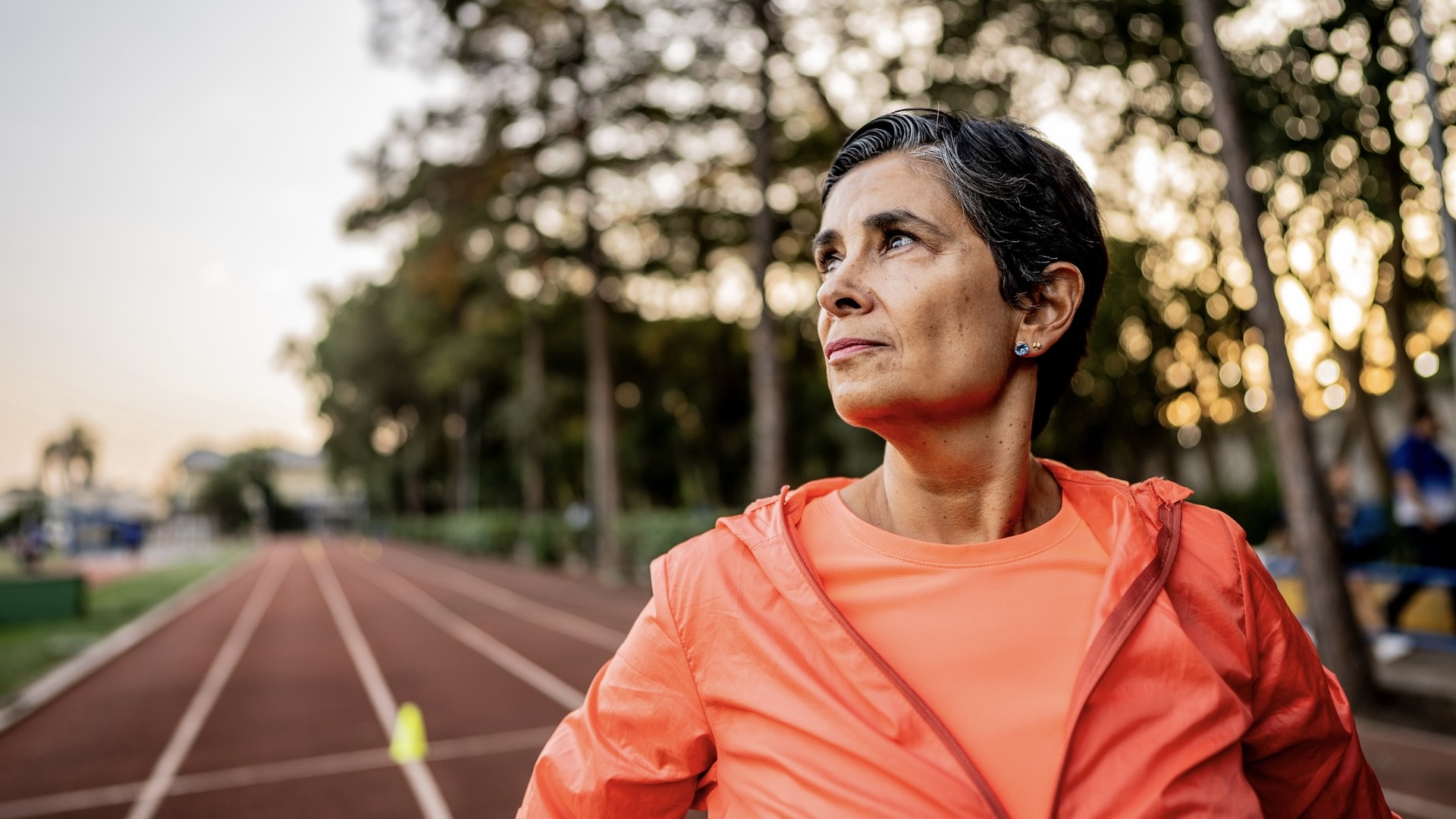
The menopause affects all women and usually around the age of 45 to 55. There are women who face the menopause earlier or later but, on average, menopause happens at the age of 51. There’s a long list of physical and mental symptoms that occur in the years before, during and after menopause and, in turn, this can cause issues for runners. We take a look at a what you can do to be a better runner – whether on the trails or on the road – in the menopause.
What is the menopause?
Menopause is a natural process and happens when the ovaries no longer release an egg every month. This results in the end of the menstrual cycle (periods) and also the end of natural reproduction.
At the same time, the hormones produced by the ovaries including oestrogen, progesterone and testosterone, decrease, while women’s cortisol levels rise.
Once periods cease, the hormone levels remain lowered for the rest of a woman’s life. Many women turn to HRT – Hormone Replacement Therapy – to boost levels of oestrogen and progesterone, and, increasingly, women are being prescribed testosterone as well.
The more commonly known symptoms of menopause include hot flushes, mood swings, heavier and irregular periods, depression and reduced motivation.
For runners, there are some more specific issues that can cause issues during the menopause, such as fatigue, muscle cramps and tightness, muscle depletion, painful joints, tendon and ligament stiffness, and weight gain.
How does the menopause affect runners?
It can be useful to have a deeper understanding of how hormones relate to body function and performance – and what this means for runners in the menopause years.
Advnture Newsletter
All the latest inspiration, tips and guides to help you plan your next Advnture!
Sally Arnison, an advanced clinical pharmacist and founder of Ascot Menopause Solutions, gives an insight into why a drop in oestrogen can cause problems. She says: "The wider oestrogen hormone group is broken down into oestradiol, oestrone and ostriol.
“These are very similar hormones but slightly different in activity and chemical structure. So, for example, it’s oestradiol fluctuations during perimenopause that cause the most unpredictable symptoms.
“Oestradiol is a very anti-inflammatory hormone so when it declines we see a lot of inflammation at a cellular level and it is this inflammation that leads to inflammaging – inflammation that develops with advanced age – and this is thought to be responsible for cardiovascular disease, osteoporosis, probably dementia and even some forms of cancer in later life.
“During women’s reproductive years,” Sally continues, “oestradiol is produced mainly by the ovaries, but post-menopause a weaker form of oestrogen called oestrone is produced by the fat cells.
“Oestrone causes metabolic changes that means fat is stored around the middle, or what many people call, middle-aged spread.”
Other issues related to reduced oestradiol include the affect on muscle mass. Sally says: “Oestradiol is required to help build lean muscle and has a direct effect on myosin, which is the protein responsible for muscle contractions.
“Reduced oestradiol therefore makes it harder to build muscle mass, leading to sarcopenia, or reduced muscle mass.”
Reduced oestrogen levels are also known to affect Type-2 muscle fibres (fast-twitch type muscles). This means female runners will often find their muscles diminish and this leads to a loss of power and speed for runners in menopause.
Further still are issues of slower muscle recovery and, as a result, increased DOMs (delayed onset muscle soreness).
It's thought that higher cortisol levels – and subsequent increased stress – can cause muscles to tense up and become more painful. Increased cortisol can also make women more sensitive to pain, which means you feel aches in the body more easily.
16 tips for becoming a better runner in menopause
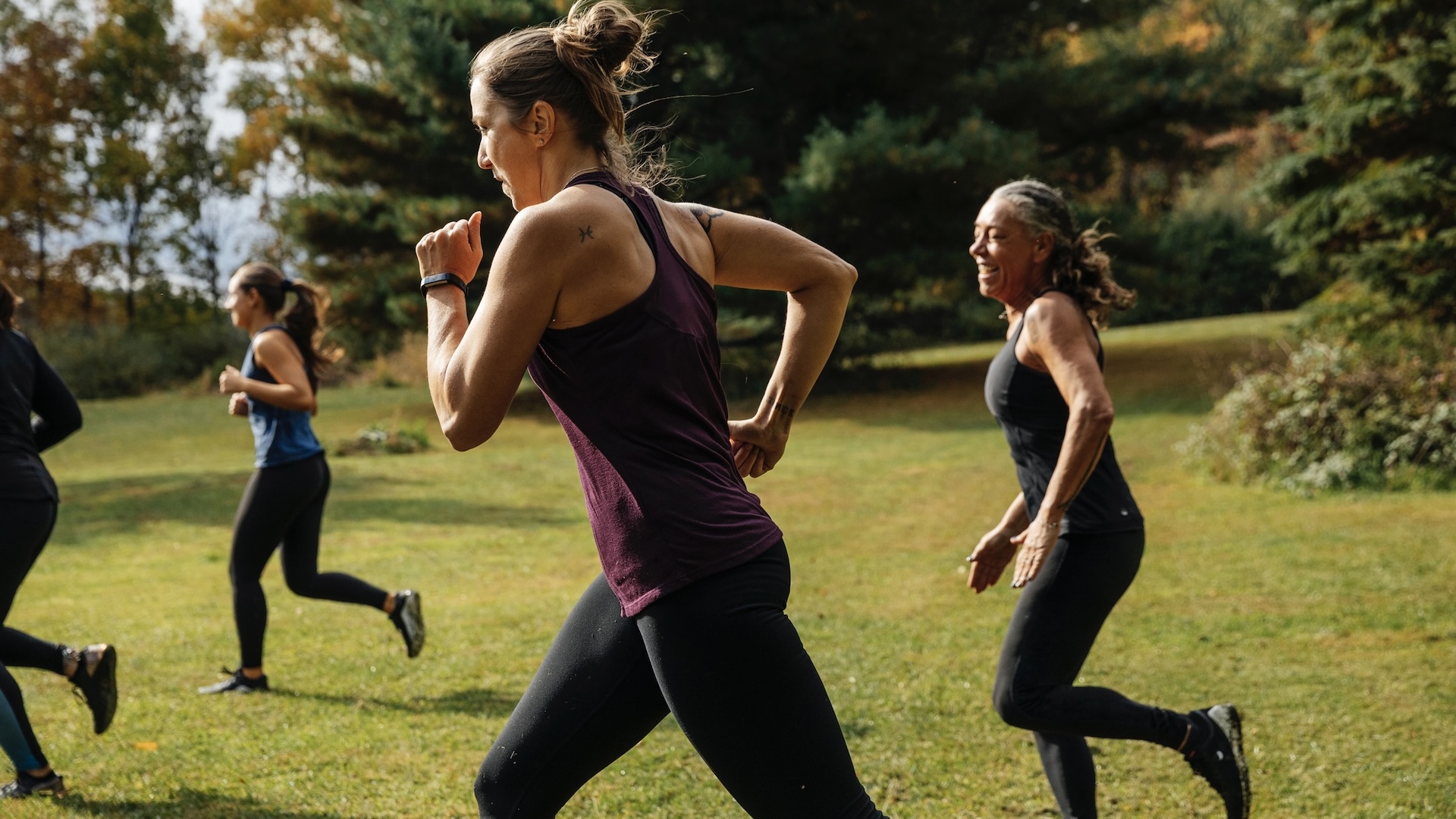
1. Lift weights
Muscles are obviously a vital component of being a runner and maintaining good muscle mass and strength can help to make you a better runner. But, as you have read, the menopause can adversely affect the size and strength of muscles.
On average, adults lose about 3 to 8% of their muscle mass every decade after the age of 30. This muscle loss accelerates to 5% to 10% after age 50. For women, this loss is particularly rapid, especially around the menopause years.
Research shows you can lose around 10% of muscle mass during perimenopause alone, and late peri-menopausal and postmenopausal women are overwhelmingly more likely to have sarcopenia than pre-menopausal or early perimenopausal women.
To maintain muscle density and strength, women should do regular strength training sessions and many experts state that lifting heavier weights has much more impact than light or moderate weights.
“Lift heavier” is the message from Dr Stacy Sims, a renowned exercise physiologist and nutrition scientist who aims to revolutionize exercise nutrition and performance for women.
Having assessed various studies, she states: “For optimal performance, women should prioritize building strength with heavier weights and lower reps (i.e. three to five sets of six or fewer reps), which are best done on ‘big lifting’ exercises like deadlifts, squats, lunges and other Olympic lifts that spread the force out among your major muscles, connective tissues and joints.”
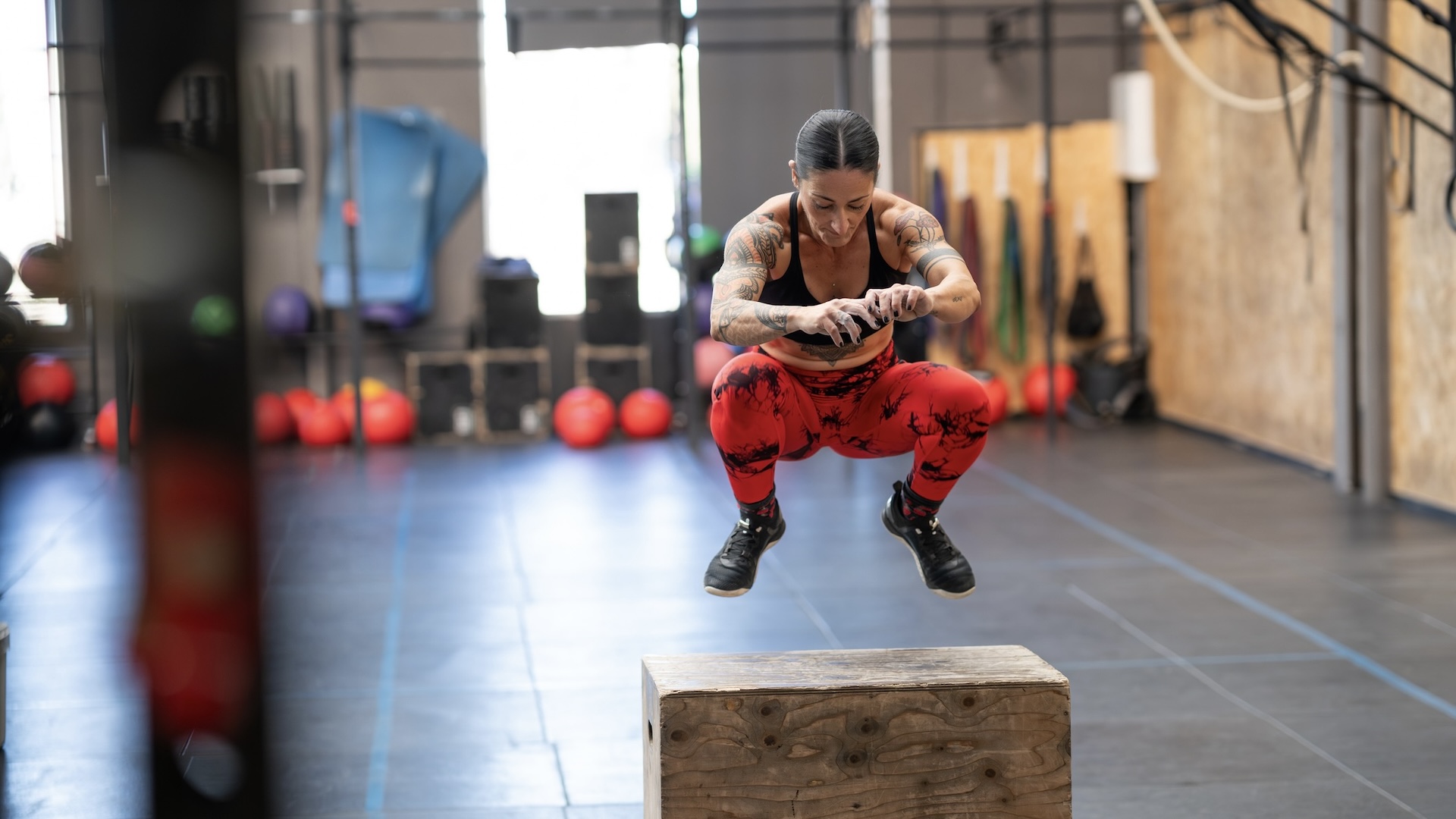
2. Build bone strength
During and post-menopause women are more prone to osteoporosis (brittle bones). Oestradiol is key to increasing calcium absorption and regulating bone turnover and absorption, and when this hormone level drops, the likelihood of brittle bones rises.
A recent article highlighted the issue and revealed a report by the Royal Osteoporosis Society that showed one in two women over 50 in the UK will get a fracture due to osteoporosis.
A fractured or broken bone will stop you in your running tracks.
While many women believe that running is a high-impact sport and enough to combat the issues of osteoporosis, medical advice disagrees.
Sally says: “More multi-directional forces are needed to build bone strength – so cross training and strength training with added plyometrics [a form of exercise that includes more explosive exercises, such as jumping] are important rather than only running.”
Medics also advise taking bone supporting supplements – or paying extra attention to your diet – such as calcium and Vitamin D for better absorption of calcium.
3. Manage your weight
As we have read, the menopause can cause weight gain and especially round the middle of your body. There is a link between carrying extra weight and slower running speed.
Of course, there is also a tipping point where losing too much weight will have a detrimental affect on muscle, strength and endurance, but aiming to maintain a healthy weight will help women to run better through menopause.
Sticking to a healthy and balanced diet is important but muscle is also key to how well your metabolism works. More muscle mass leads to a higher metabolism. The higher your metabolism, the more calories you burn – even when you’re resting.
4. Run shorter and harder
Another area of run training where Dr Sims offers her expert advice is on the topic of running volume. In recent years, there has been an increase in the number of people running longer distances and especially ultras.
But Dr Sims points out that a lot of exercise volume and moderate-intensity training will often adversely affect menopausal athletes. The issue is, she reveals, that moderate-intensity training increases baseline cortisol, which can cause an increase in fat around the stomach, as well as a loss of lean mass.
A higher volume of running in the menopause years can also cause other adverse health issues such as bone stress injuries, as well as soft-tissue injuries and joint pain.
Dr Sims, and other menopause sports experts, encourage women to focus on doing more “quality” high-intensity sessions, such as VO2 workouts, sprint intervals or hill reps.
She recommends women “warm up their nervous system first” by doing some plyometric exercises, such as box jumps or squat jumps, then progress to higher intensity runs.
This is not to say that women should stop running longer distances. Many women find mental health benefits from running longer and slower miles – especially when running with friends – but in between, for example, a longer weekend run, the focus should be on higher intensity and shorter, faster running.
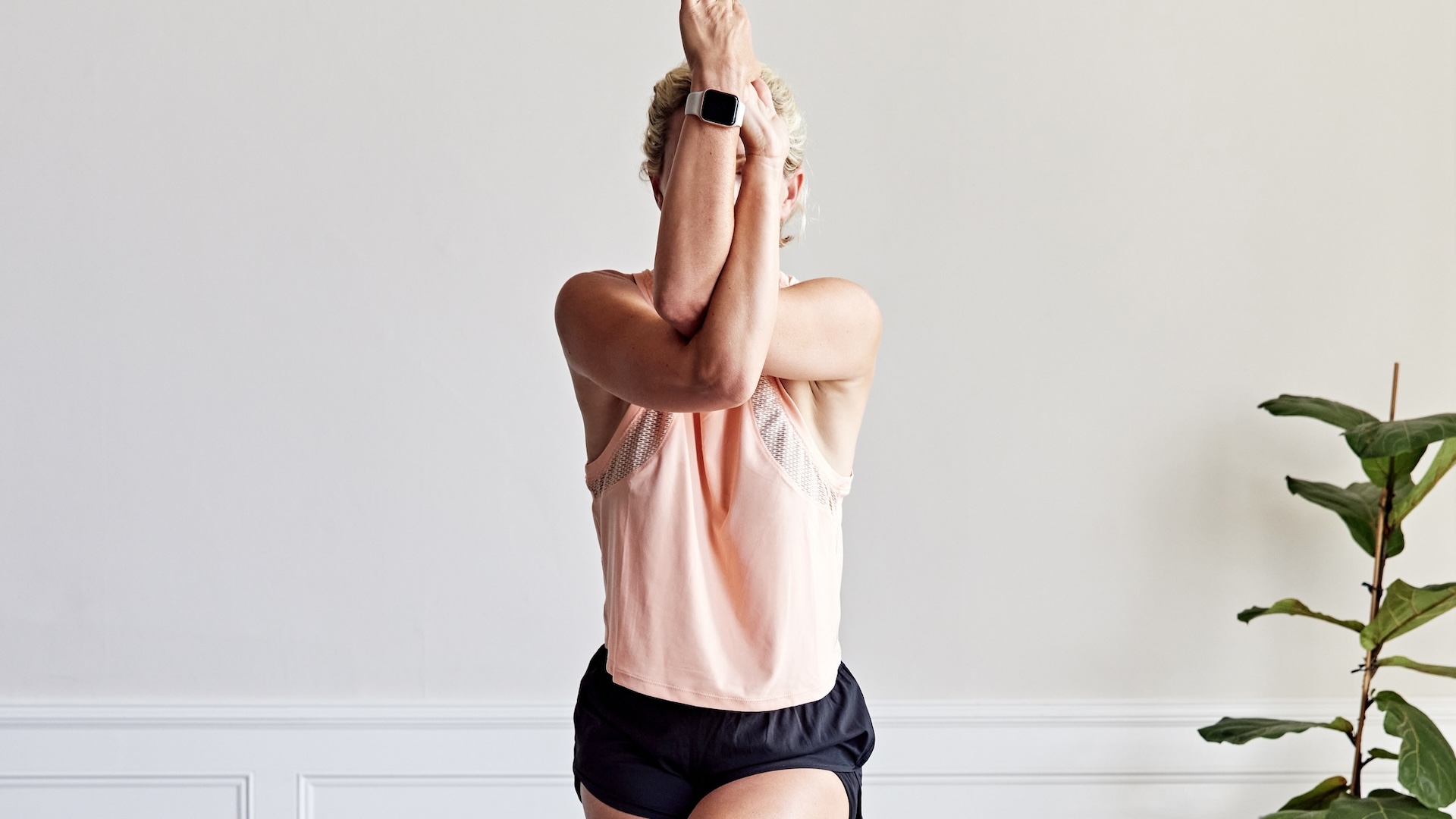
5. Plan your recovery
Allowing the body, especially the muscles, to fully recover between more intense exercise, including running, is vital for better performance.
Exercise therapist Carole Barrie, who has undertaken a menopause fitness course , recommends building in more recovery days.
She says: ”Sometimes that might mean 72 hours of recovery after a hard session. It doesn’t mean you can’t exercise, just do something less stressful so you don’t injure yourself because your body is tired.”
In addition, it is recommended that women ensure they get enough post-exercise protein.
Dr Sims suggests women consume 35g to 40g of protein and within 30 to 45 minutes of finishing an exercise session.
6. Be kinder to yourself
It is a good idea to shift how you think about yourself and running.
Rather than focussing on what you used to be able to achieve in a running race, or comparing your pace to others, it’s important to think more about what makes you happy now.
Running in the menopause doesn’t need to be about setting faster times, or running the same races as before. It could be that running takes you down a different path. For example, you might decide to explore new places by becoming a parkrun tourist, or you could try exploring new places by booking a running holiday.
Some women in menopause decide that their running should be more sociable and so they spend more time with friends doing their favourite sport, while others take on more endurance routes and enjoy run-hiking, rather than full-on running.
We’re not saying that you have to give up on running goals but rather you should to reframe them to take account of how your hormones affect you.
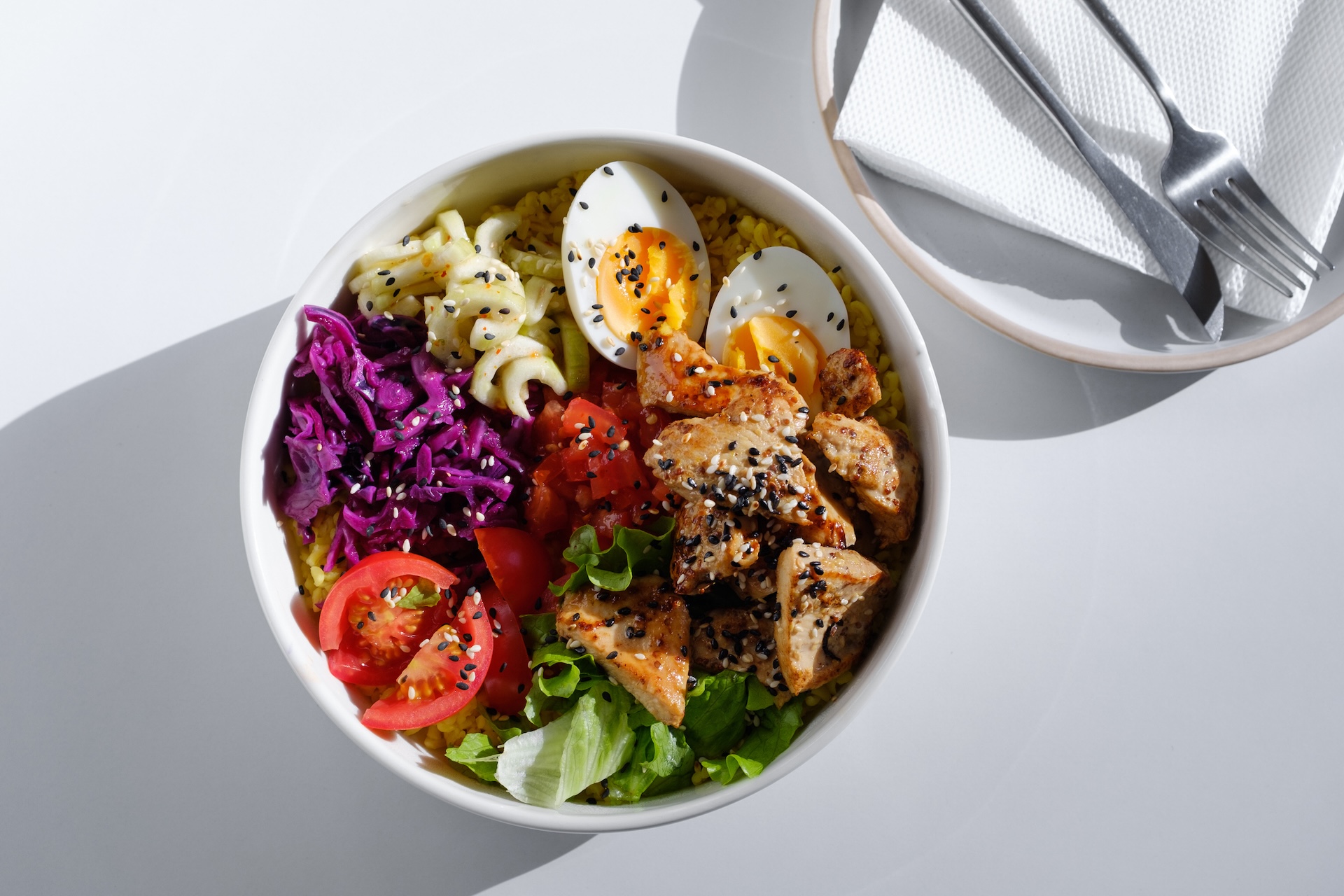
7. Eat well
It’s also important to take a much more focussed look at your general nutrition.
Kelly Ludwig, UKIHCA registered health coach with a special interest in food and mood, reveals her tips for “Managing Menopause – Eat to Beat Your Symptoms”.
"How and what you eat has a direct impact on your mood, energy and stress levels,” she says.
“The menopause is not the time to be restricting or depriving yourself or following a rigid diet that limits food choices or completely eliminates food groups.
“Instead, I recommend a high protein breakfast, such as authentic Greek yogurt, eggs or scrambled tofu. Protein fills you up, keeps you satisfied, helps to curb cravings and helps us build lean muscle mass.
“Then, eat the majority of your calories during the day. Try eating your main meal at lunchtime and have something lighter like soup or salad for dinner. You use the majority of calories during the day so it makes sense to consume them earlier on when you need them. Eating later can also disrupt your sleep.
“It is important to include good quality, complex carbs in your diet. They are your body’s primary source of energy and eating a low-carb diet can negatively affect your performance and energy levels. Carbs are also your brain’s favourite food and eating a low-carb diet can lead to brain fog.”
Fasting as a way to control calorie intake has become a big topic in recent years and many women believe it is key to weight loss and management. But Dr Sims reports that intermittent fasting and the ketogenic diet doesn't work for athletic women, or any woman who exercises more than 150 minutes per week.
She explains the medical reasons why, concluding that "intermittent fasting can lead to disrupted menstrual cycles, higher anxiety and stress, impaired performance and often weight gain – pretty much the opposite of what you’re looking for."
She provides more nutrition tips during menopause in her book, Next Level.
8. Aim for balance
Sally Arnison points to links between over-training and an increase in cortisol production. She says: “This can occur because of a stress response, meaning that women in perimenopause and menopause need to think differently about training.
“So, what worked in your 20s and 30s won't work in your 40s and 50s. Think about more active rest, cross training, resistance training and mobility work and less about pure cardio exercise, such as running.
“In short, if you manage your cortisol by a balanced approach to lifestyle, including sleep, nutrition, stress management and hormones, all this can combine to make you a better runner.”
9. Train with purpose
It is a good idea to use the SMART method of training. SMART is an acronym that stands for Specific, Measurable, Achievable, Realistic and Time limited.
SMART training is important for people of all ages and with all kinds of goals but during menopause, it’s even more of a useful tool.
All too often, runners have unrealistic expectations and this can be very true for menopausal women. Many will measure their running pace, times and abilities with how they were in previous years, without taking into account hormonal changes and affects.
Simply trying to plough on without SMART goals or training as you did on your 20s and 30s will most likely leave you feeling frustrated. Some women stop running in the menopause because they find it too hard or too painful.
Your SMART goals might be to include 50% more trail running instead of road running; aim for “good for age” race result instead of focusing on previous PBs; have two or three days of recovery each week, rather than just one; include two strength training sessions to your weekly programme; and focus on trying to get at least seven hours of quality sleep each night.
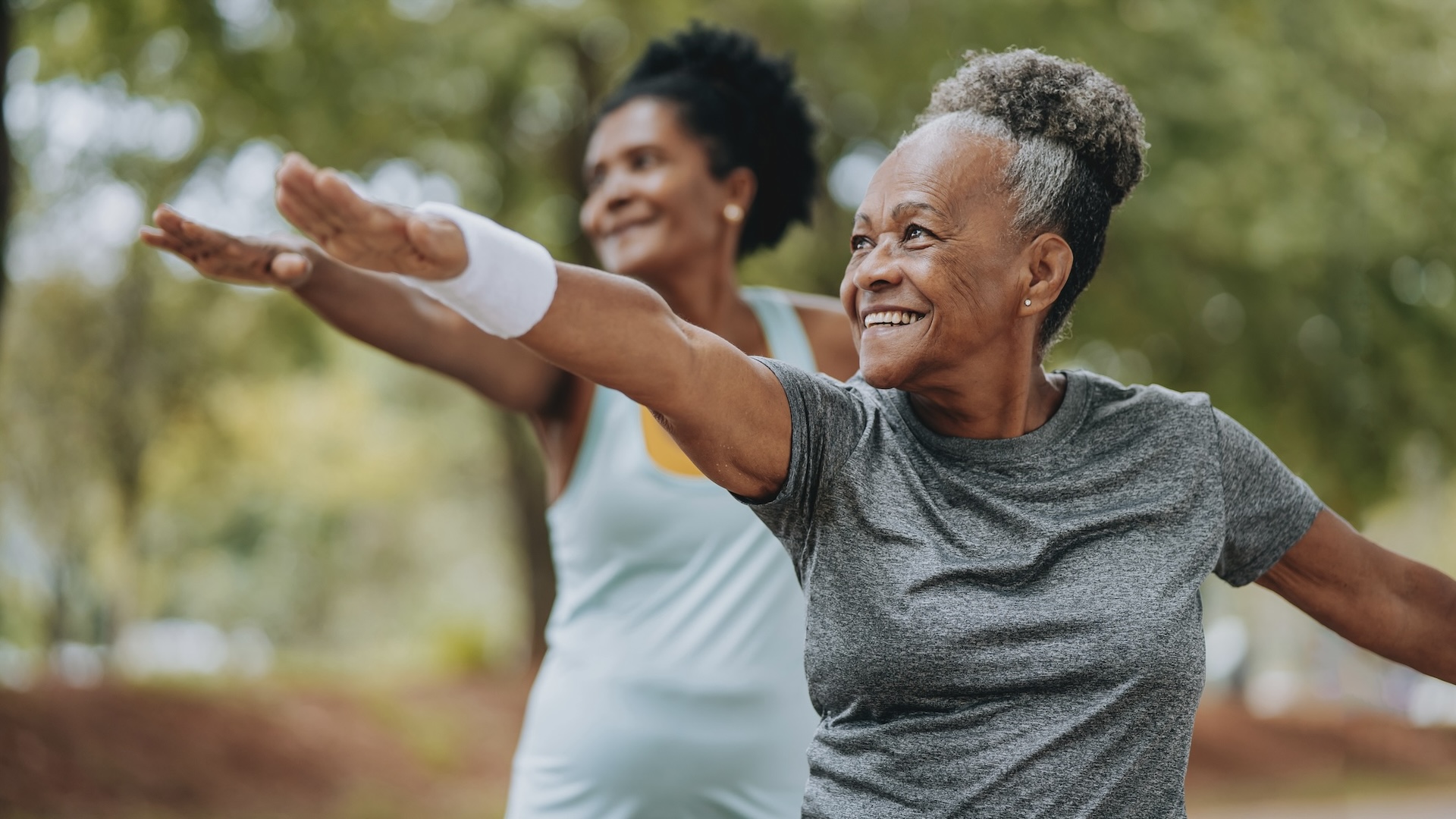
10. Hire a running coach
It can be very useful to consult a personal trainer or running coach on how to set realistic goals in the menopause. You should ensure the coach has knowledge of the menopause or, even better, has completed a course specifically tailored to understanding exercise and the menopause.
This means they can work with you to manage your personal issues while also supporting you with SMART targets.
11. Check your iron levels
Some women report lowered iron levels during menopause. This is because estradiol can interfere with how the body metabolises iron.
Low iron, or anemia, can cause body aches due to reduced oxygen delivery. When your muscles do not get enough oxygen, they become fatigued and sore. It can also increase inflammation, which adds to the discomfort
You can ask your doctor to check your iron levels to rule this out.
12. Work on your flexibility
As you will have read, hormone changes can lead to muscle and joint issues – and one way to help with body tension relief is to try to stay as flexible as you can.
Daily stretching at home can help but you are much more likely to include stretching and mobility into your life if you attend a restorative yoga class.
A professional massage, or using a massage gun, can also help to keep muscles more supple. The benefits of sports massage include maintaining biomechanical function and balance, supporting athletic performance and injury prevention.
13. Wear layers
A well-known issue of menopause is hot sweats, which are caused by a decrease in oestrogen levels. In response to this, women's glands release higher amounts of other hormones that affect the brain's thermostat and can cause body temperature to fluctuate.
Many women runners find that they get more extreme feelings of hot and cold. Being too hot or too cold can affect your performance and it’s therefore a good idea to wear clothing layers that you can remove or add to as required.
Rather than suffer being too hot or too cold, you should aim to adjust your layering, such as running tops and running jackets, as you feel these temperature changes.
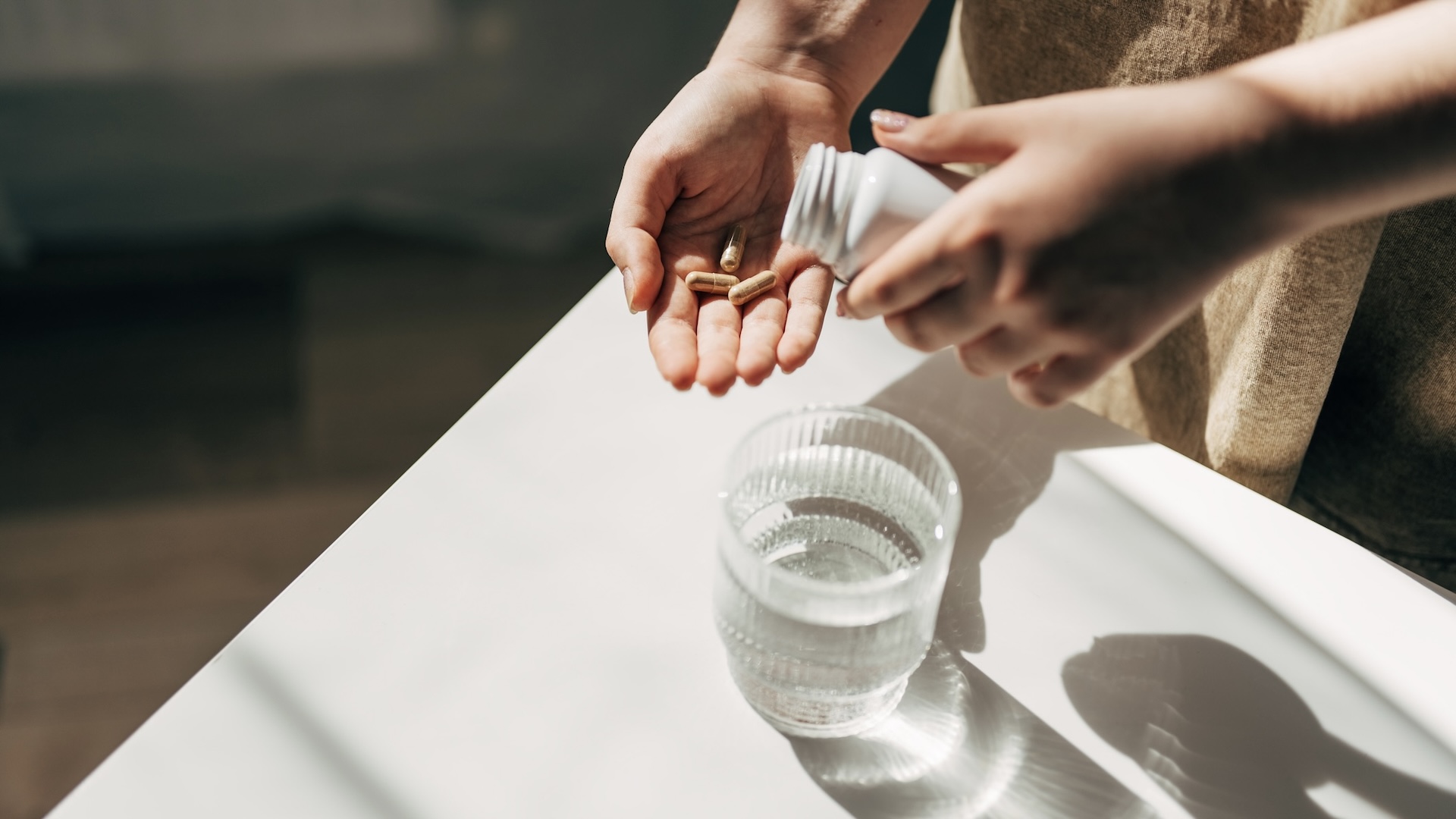
14. Think supplements
We have talked about the importance of calcium and Vitamin D for good one health. In addition, lowered oestrogen can affect the uptake and utilisation of magnesium.
Sally Arnison explains: "Magnesium is important for lots of processes, including muscle recovery, bone strength and sleep. Reduced magnesium is thought to be linked to reduced oestrogen levels and this is one supplement I do recommend during menopause to help with sleep and muscle recovery."
15. Talk to your doctor
Many women find that Hormone Replacement Therapy (HRT) and testosterone treatments have benefits through peri-menopause, menopause and post-menopause. The NICE guidance on HRT in the UK is continually updated but for many runners it can make a huge difference to how they cope with reducing hormone levels, both mentally and physically.
Sally reveals how testosterone therapy may benefit runners in menopause, too. She says: “Testosterone is known to play a important role to play in sex drive. Women who take it for reduced libido often tell me that they feel stronger have more stamina and power, as well as improved brain function and a greater zest for life.”
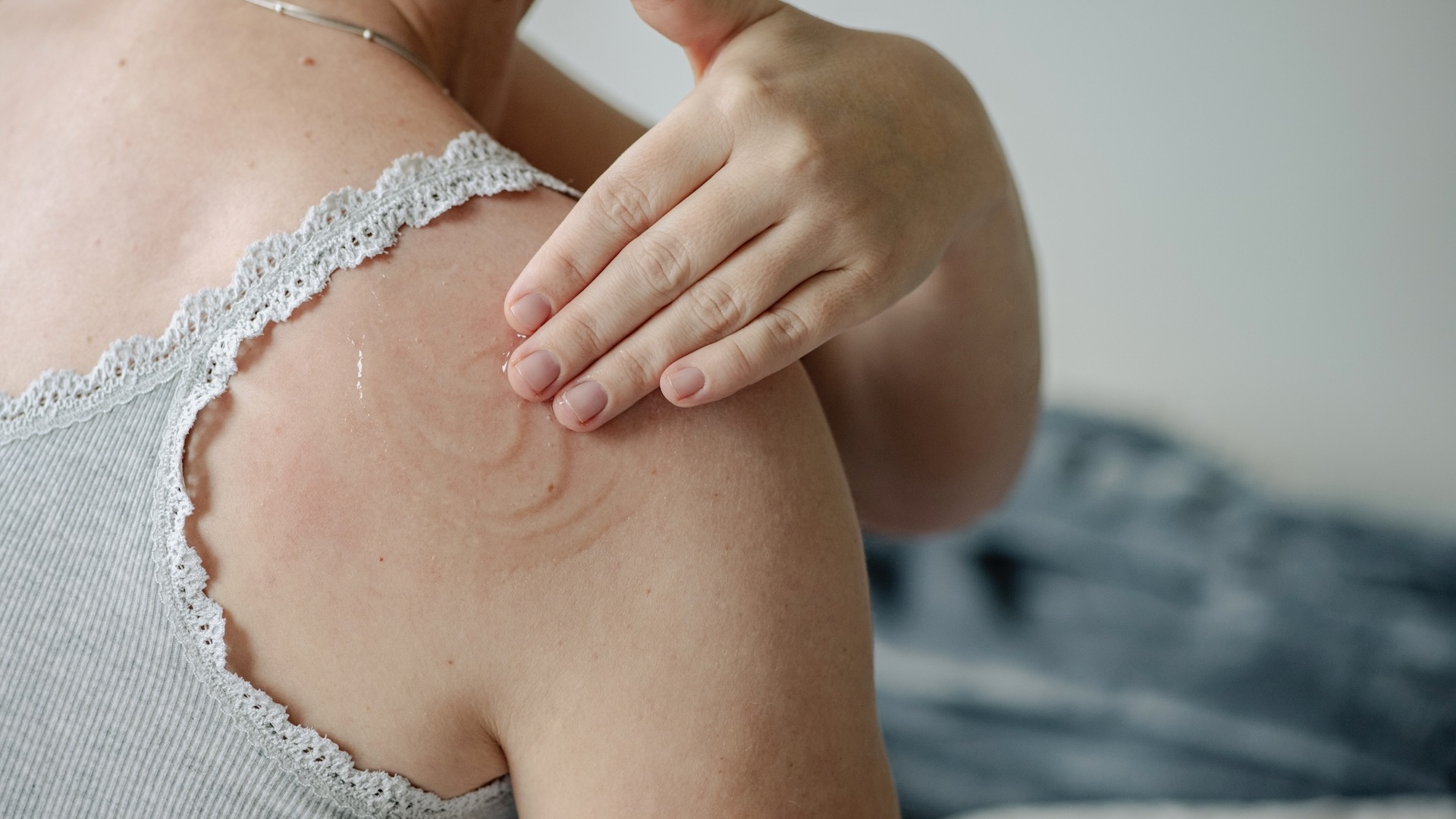
16. Seek support
There is no need to suffer in silence through the menopause and there are many places where you can seek support. Perhaps you have running friends of a similar age, or older, who can offer their personal advice on how to keep on running through menopause.
A GP or medical menopause consultant could be your key to different medications.
You should also look for running coaches or running groups where menopause is considered an important factor when training.
One thing that many women find in menopause is that sharing issues, tips, advice and successes with other women reaps rewards both for themselves and for others.

Fiona Russell is a widely published adventure journalist and blogger, better known as Fiona Outdoors. She is based in Scotland and is an all-round outdoors enthusiast with favorite activities including trail running, mountain walking, mountain biking, road cycling, triathlon and skiing (both downhill and backcountry). Aside from her own adventures, Fiona's biggest aim is to inspire others to enjoy getting outside and exploring, especially through her writing. She is also rarely seen without a running skort! Find out more at Fiona Outdoors.
